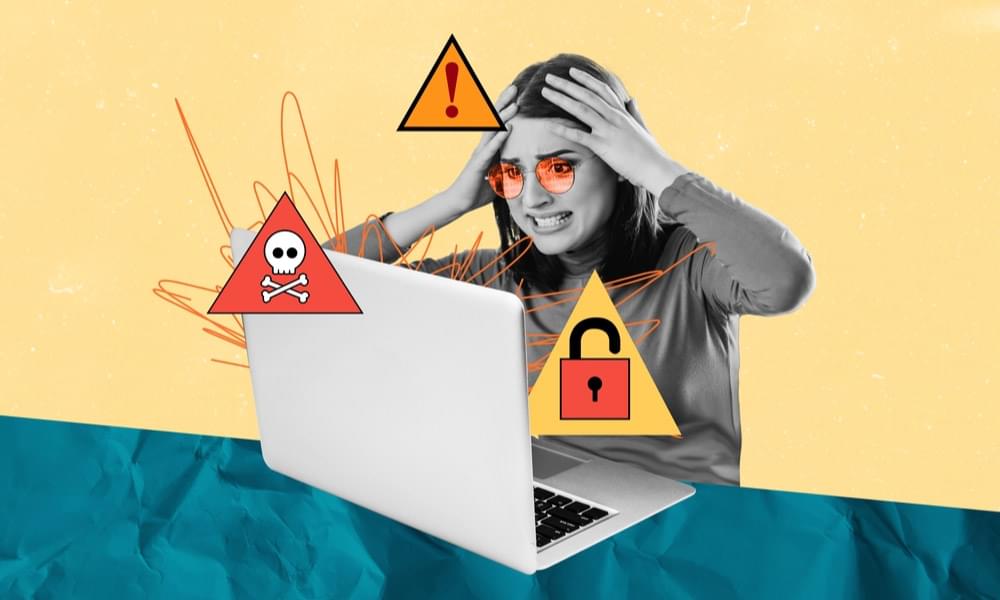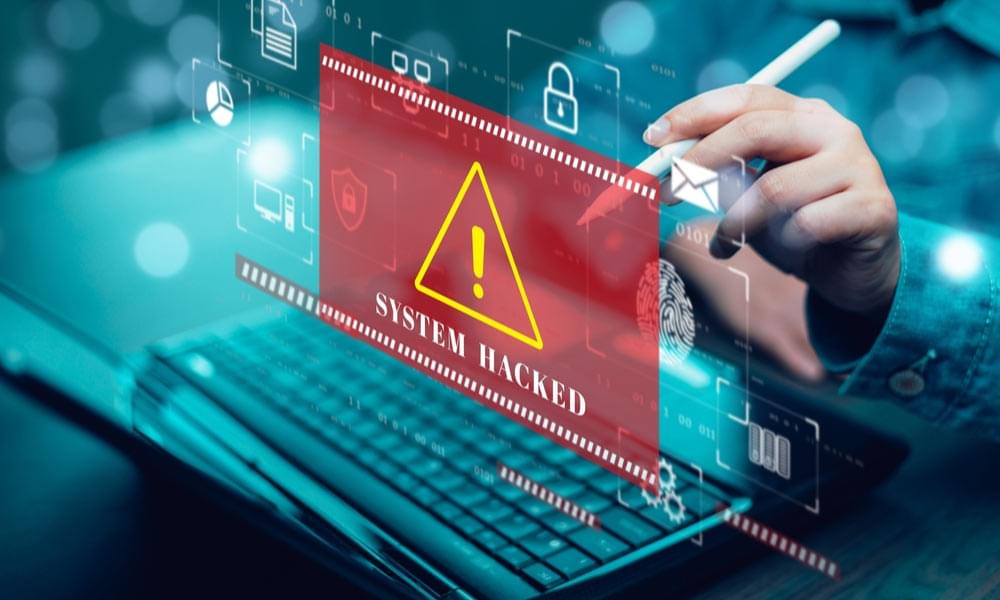How to identify malicious URLs and protect yourself online
Nowadays, the internet is full of possible threats. Malicious URLs can be the cause of identity theft, financial loss, or data breaches and pose a serious threat to your online safety. It is crucial to identify malicious links because that is how you protect yourself and any sensitive information while browsing the web.
In this guide, we want to equip you with the knowledge and the tools to recognize suspicious links and malicious websites. You will find out the typical signs of harmful URLs, effective strategies to evaluate URLs, and efficient techniques for good browsing. We’ll also discuss what to do if you mistakenly click a malicious link and how to ensure an extra level of security while browsing the web by using a trusted VPN provider.
Critical signs of malicious URLs
Identifying malicious URLs is crucial for protecting yourself online. By understanding the common signs of suspicious links, you can better safeguard your personal information and avoid falling victim to cyberattacks. Let’s look at some of the most important signs that should be taken into consideration when dealing with unknown URLs.
Suspicious domain names
One of the most common signs of a malicious URL is an unusual or misleading domain name. Most of the time hackers or cybercriminals often create websites with names similar to legitimate brands or companies to trick users. They may use similar but slightly different versions of well-known domain names or deliberately spell them wrong, including additional letters. For instance, instead of them writing PayPal.com, the fake website might look like PayPal-security.com or something like paypak.com. This highlights the importance of cybersecurity in protecting yourself from such deceptive tactics.
Always take your time to carefully read the website name before entering any personal information or making a purchase. It is also important to be aware of subdomains that mimic familiar websites, often with extra words added that do not belong. For example, a malicious URL may be 'google.com.malicious-site.com' instead of the normal 'google.com.' The part of the domain that should be checked is the last part of the URL. In the example "http://google.com.cust_login.ie," the actual domain is “cust_login.ie,” not "google.com."
Unusual characters or symbols
Malicious URLs often contain additional characters and symbols which are meant to mislead users or avoid detection. Avoid links that include a bunch of hyphens, underscore signs, or other specific symbols. Most of the time, genuine sites will not include most of these aspects in their domains.
Another sign that should alert you is the use of characters and numbers that seem to be random in the URL path. For instance, a suspicious link may appear like "website.com/dfts3b4/login.php." These random characters may indicate that the site is trying to redirect the users to a different site or there is something that the site owner does not want the users to see.
Misspellings and typos
Cybercriminals frequently use misspellings and typos in their URLs to trick users who might make mistakes when typing web addresses. This technique, known as typosquatting, takes advantage of common typing errors to redirect users to malicious sites. For example, instead of typing the address as 'google.com' you may innocently type it as 'gogle.com' and end up on a site that is laden with malware.
To avoid such incidences, you should be very cautious, especially when typing URLs for restricted sites such as banks, business entities, or shopping sites. Make sure to look twice before typing in the URL and stay clear of typing errors by saving the valuable sites you visit as bookmarks.
By staying attentive to these habits and watching for common signs of malicious URLs, you can greatly reduce your chances of falling victim to internet fraud or cybercrime. But, as they always say the best policy is if a link looks ink suspicious or too good to be true, it probably is.

Tools and techniques for URL analysis
To protect yourself from malicious URLs, it’s essential to have the right tools and techniques at your disposal. Here are some ideas for analyzing suspicious links and keeping oneself protected online.
URL checkers and scanners
URL checkers and scanners are great tools to identify links that may be a potential threat. These online services operate in real-time and scan the given URL against large databases containing blacklists of such sites. Some popular options include:
- VirusTotal: It is a free service where the website scans the URL using more than one antivirus engine and website scanner. It is a perfect solution for identifying different kinds of viruses and other threats that your standard antivirus won’t be able to identify.
- Urlscan.io: This platform gives a complete check of websites, going deeper to check aspects such as HTML, CSS, JavaScript, and images. It also scans for cookies, server IPs, domains, or logs and gives a dictate of whether a site is bad or not.
- Google Safe Browsing: This site helps you find out where a website is at the moment and whether it is advisable to navigate to it or not.
These URL checkers can help you avoid phishing attacks, malware-infected sites, and other online threats. Using them before clicking on the suspicious link saves you from being exploited by cybercriminals and getting scammed.
Browser security features
Modern web browsers come equipped with built-in security features that can help protect you from malicious URLs. These features work in the background to keep you safe while browsing. Some key browser security capabilities include:
- Phishing and malware protection: Browsers often have integrated systems that warn you when you’re about to visit a potentially dangerous website.
- Safe Browsing technology: This feature checks URLs against databases of known phishing and malware sites, alerting you if a link is suspicious.
- Automatic updates: Regular browser updates make sure that you have the latest security patches and protection against newly discovered threats.
To make the most of these features, keep your browser updated, and don’t ignore warning messages when they appear.
Hover-over link preview
One of the simplest yet efficient methods of filtering out malicious links is to hover over the link and read the URL. This method enables you to view the actual location of a link before clicking it. Here’s how to use this technique:
- Place the mouse pointer over the link or button of interest or hover over it to analyze.
- Instead of clicking on this link, spend some time with the mouse pointer hovering over the link.
- It may be located at the bottom left corner of your browser window if you use Internet Explorer or at the bottom of a small rectangular box that can be seen near the link if you are using Firefox.
- Carefully examine the URL to see if it looks legitimate and matches the website you’re expecting to visit.
This technique is more useful when you suspect there might be suspicious links in Pegasus emails or on websites attempting to redirect you to a malicious site. By taking a moment to preview links before clicking, you can avoid many potential threats.
By utilizing these tools and techniques, you can significantly enhance your ability to identify malicious URLs and protect yourself online. Remember, staying vigilant and using multiple methods of verification is key to maintaining your online safety.
Best practices for safe browsing
There is a set of best practices to be followed with in order to safeguard oneself from the malicious URLs and to ensure a safe use of the internet. By doing so, you can minimize your potential of becoming a victim of online threats, phishing scams, and other similar attacks.
Use a VPN for added security
It is also important to use a Virtual Private Network while surfing the web because it provides an additional security barrier to protect data from hackers. While a VPN alone cannot guarantee complete safety from malicious URLs, it can offer several benefits:
- Helps to safeguard your internet connection by encoding your traffic, making it practically impossible for hackers to get to your data
- Protects your IP address from being seen by others, which is very important in preventing your online activities from being monitored by other people
- Allows secure connection, especially when working with unprotected Wi-Fi connections, which are favorite among hackers.
By using a reliable VPN service, you can enhance your online privacy and security. Nevertheless, it is crucial to understand that the VPN should be employed together with other security tools, and it is not designed to be the sole security solution.
Verify sender authenticity
Before clicking on a link, one has to double-check that the sender is genuine because it is one of the most effective ways of protecting yourself against shorter links. If you get an email or message with a link, the first thing you should do is look at the sender’s address and scrutinize it. Also, pay attention to such details as the presence of errors in spelling or the absurdity of the domain name. For example, instead of 'paypal.com,' there is the 'paypal-security.com' kind of link or 'paypak.com' among others.
To further verify the sender’s identity, consider these steps:
- Double-check the sender’s email address to ensure it matches the expected domain for that company.
- Be cautious of emails claiming to be from official sources but having suspicious or misspelled email addresses.
- When it comes to doubts about the legitimacy of the sent email or its attachments, it is better to turn directly to the company via the company’s official numbers and or addresses given, not in the received email.
Be cautious of shortened URLs
URL shortening services, while convenient, can be misused by cybercriminals to hide the true destination of a link. When you encounter a shortened URL, it’s essential to use caution before clicking. Here are some tips to help you navigate shortened links safely:
- Use URL expander tools that show the complete link when there is a shortened URL.
- Do not click shortened links in emails or messages, especially if an unfamiliar subscriber sends them.
- Consider using browser extensions or online services that reveal the destination of shortened URLs without actually visiting the site.

What to do If you accidentally click a malicious link?
You can take all the precautions, but sometimes, you might accidentally click on a URL that has been embedded with a virus. If this happens, don’t panic. Here are some measures you can take to reduce the impact of such threats and keep your device and data safe.
Disconnect from the internet
The first and most crucial step is to disconnect your device from the internet immediately. This action ensures that the attacker’s server does not get any further contact with your device to get access to your data. If you are connected through a wire, then you can unplug the wire from your computer system. For users of Wi-Fi disable the Wi-Fi on your device or switch on the airplane mode on your mobile phone.
Run a malware scan
After disconnecting your device from the internet, there is nothing that is more important than scanning for malware. Use reputable antivirus or anti-malware software to check for any potential threats or compromises on your computer. Some reliable free options include Malwarebytes, Avast Antivirus, AVG Antivirus, Bitdefender Antivirus Free Edition, and Kaspersky Antivirus.
Perform a complete scan of your system while the device is still disconnected from the internet. Don’t use the device during the scan, and wait for the results. If the scanner finds suspicious files, follow the instructions to remove them. If you’re not familiar with gadgets, consider taking your device to a professional for a thorough check.
Change passwords
After running a malware scan, it’s crucial to change your passwords, especially for important accounts like email, online banking, and social media. Even if you haven’t entered any personal information, it’s possible that the hacker has accessed sensitive data through the click alone.
When updating your passwords, keep these tips in mind:
- Use strong and unique passwords for each account to prevent future attacks.
- Avoid reusing old passwords or variations of compromised passwords, as cybercriminals often test these for years.
- Consider using a password manager to generate and store complex passwords for all your accounts.
- Enable multi-factor authentication (MFA) whenever possible for an extra layer of security.
Remember to change passwords for any accounts that use the same or similar passwords as the potentially compromised ones. This step is crucial in preventing unauthorized access to your sensitive information and accounts.
By following these steps, you can significantly reduce the risk of further damage from clicking on a malicious URL. However, it’s essential to remain vigilant and monitor your accounts for any unusual activity in the days and weeks following the incident. If you suspect any unauthorized access or fraudulent activity, contact the relevant service providers immediately and consider placing a fraud alert on your credit report.
Conclusion
Safe online means staying aware of threats and staying alert all the time. The best way to avoid falling victim to cyberattacks is to learn how to identify malicious URLs, use the right tools for analysis, and follow best practices for safe browsing. So, even if you’re careful, accidents can happen, and it’s important to know what to do if you click a suspicious link.
While using a VPN such as EonVPN can provide an additional layer of protection to your online activities, it is not a cure-all solution. If you want to use a VPN, you need to do it along with other security measures, like keeping your software up to date, password strength and being vigilant to potential threats. If you can successfully adopt a multi-faced view of cyber security, then you will enjoy a safer and more secure internet experience.

